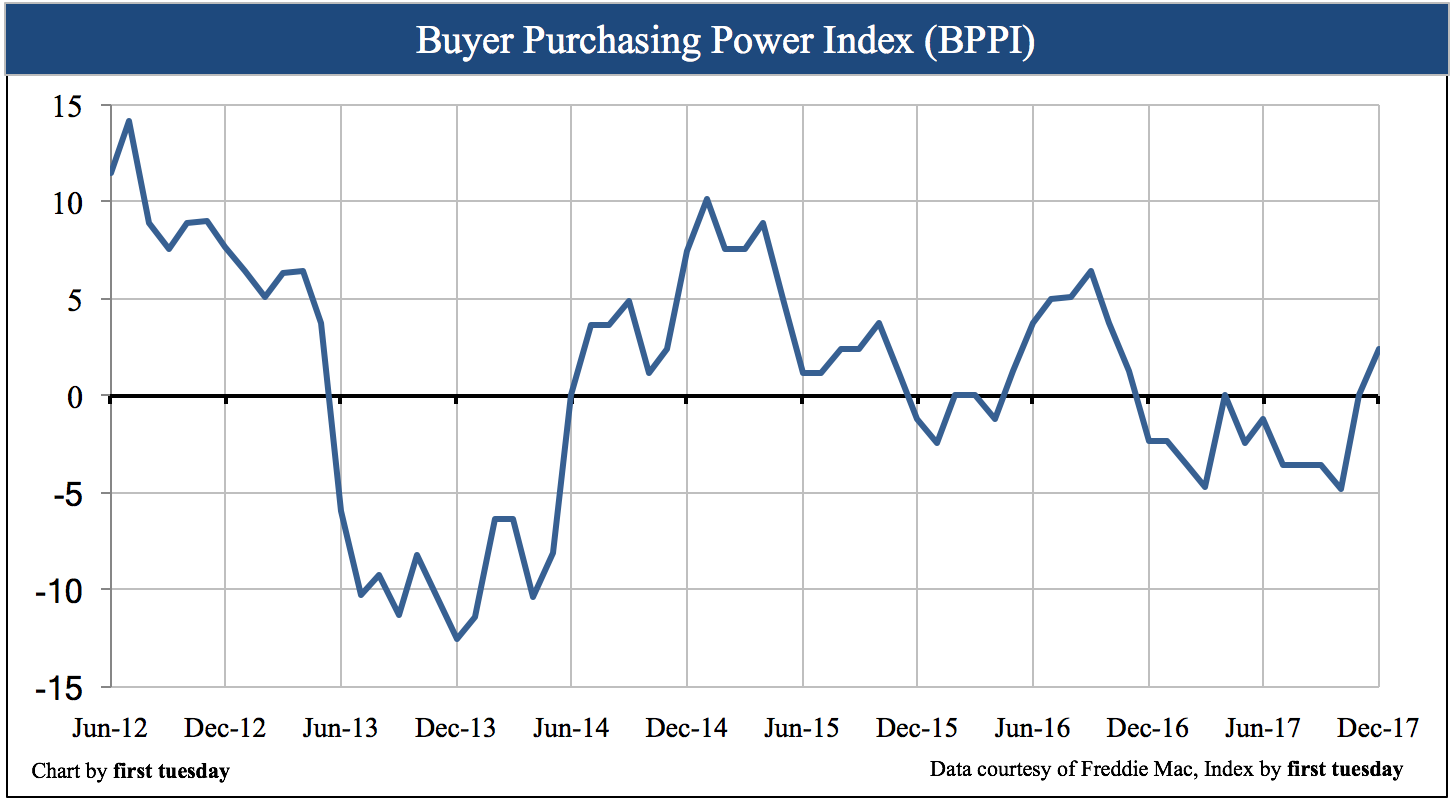The California Buyer Purchasing Power Index (BPPI) figure was +2.42 in December 2017. This positive figure tells us a homebuyer with the same income is able to borrow 2.42% more today than a year ago. The BPPI figure increased as a result of slightly lower year-over-year mortgage rates. FRM rates remain below 4% heading into 2018 due to the present lack of investment opportunities for the excess sums in bonds and on deposit with the Federal Reserve (the Fed). This will soon change.
While the Fed continues to take action to raise short-term rates, which influence FRM rates, the real obstacle comes from Fed plans to begin selling off its substantial portfolio, which includes mortgage-backed bonds. This will cause FRM rates to edge higher.
FRM rates will likely begin to increase more noticeably in 2018. The BPPI figure will return to negative territory as homebuyer purchasing power falls. Expect home sales volume to continue its year-long decline, moved along by higher mortgage rates, with prices following 9-12 months later.
The long-term outlook for the BPPI is a decades’ long period of descent as mortgage rates rise with renewed growth in our economy as it recovers from the Great Recession. Sellers can expect downward pressure on home prices in the coming years, as buyers are limited to borrowing less over the coming decades with the same income.
Chart update 01/21/18
| Dec 2017 | Nov 2017 | Dec 2016 | |
| Buyer Purchasing Power Index (BPPI) | +2.42 | +0.00 | -2.36 |
About the BPPI
The Buyer Purchasing Power Index (BPPI) is calculated using the average 30-year fixed rate mortgage (FRM) rate from Freddie Mac (Western region) and the median income in California.
A positive index number means buyers can borrow more money this year than one year earlier.
A negative index figure translates to a reduced amount of mortgage funds available.
An index of zero means there was no year-over-year change in the amount a buyer can borrow with the same income. At a BPPI of zero, homebuyers cannot purchase at higher prices than one year before unless they resort to adjustable rate mortgages (ARMs) to extend their borrowing reach or greater down payment amounts.
As long-term BPPI trend declines, the capacity of buyers to borrow purchase-assist funds is reduced. In turn, buyers needing purchase-assist financing on average can only pay a lesser price for a home. To keep the inventory of homes for sale moving at the same pace, sellers will need to lower prices to accommodate buyer purchasing power or pull their properties off the market.
—
first tuesday journal online is a real estate news source. It provides analyses and forecasts for the California real estate market, and has done so since 1978.















